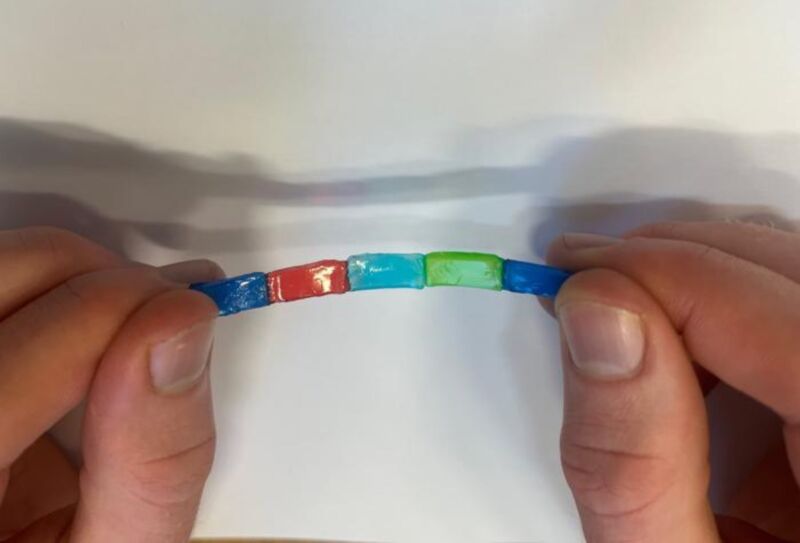- Регистрация
- 17 Февраль 2018
- Сообщения
- 25 397
- Лучшие ответы
- 0
- Баллы
- 2 093
Offline

Enlarge / Researchers have developed soft, stretchable "jelly batteries" that could be used for wearable devices or soft robotics. (credit: University of Cambridge)
Inspired by the electric shock capabilities of electric eels, scientists have developed a soft, stretchable "jelly" battery ideal for wearable devices or soft robotics, according to a new paper published in the journal Science Advances. With further testing in living organisms, the batteries might even be useful as brain implants for targeted drug delivery to treat epilepsy, among other conditions.
As previously reported, the electric eel produces its signature electric discharges—both low and high voltages, depending on the purpose for discharging—via three pairs of abdominal organs composed of modified muscle cells called electrocytes, located symmetrically along both sides of the eel. The brain sends a signal to the electrocytes, opening ion channels and briefly reversing the polarity. The difference in electric potential then generates a current, much like a battery with stacked plates.
Vanderbilt University biologist and neuroscientist Kenneth Catania is one of the most prominent scientists studying electric eels these days. He has found that the creatures can vary the degree of voltage in their electrical discharges, using lower voltages for hunting purposes and higher voltages to stun and kill prey. Those higher voltages are also useful for tracking potential prey, akin to how bats use echolocation. One species, Volta's electric eel (Electrophorus voltai), can produce a discharge of up to 860 volts. In theory, if 10 such eels discharged at the same time, they could produce up to 8,600 volts of electricity—sufficient to power 100 light bulbs.
Read 7 remaining paragraphs | Comments
